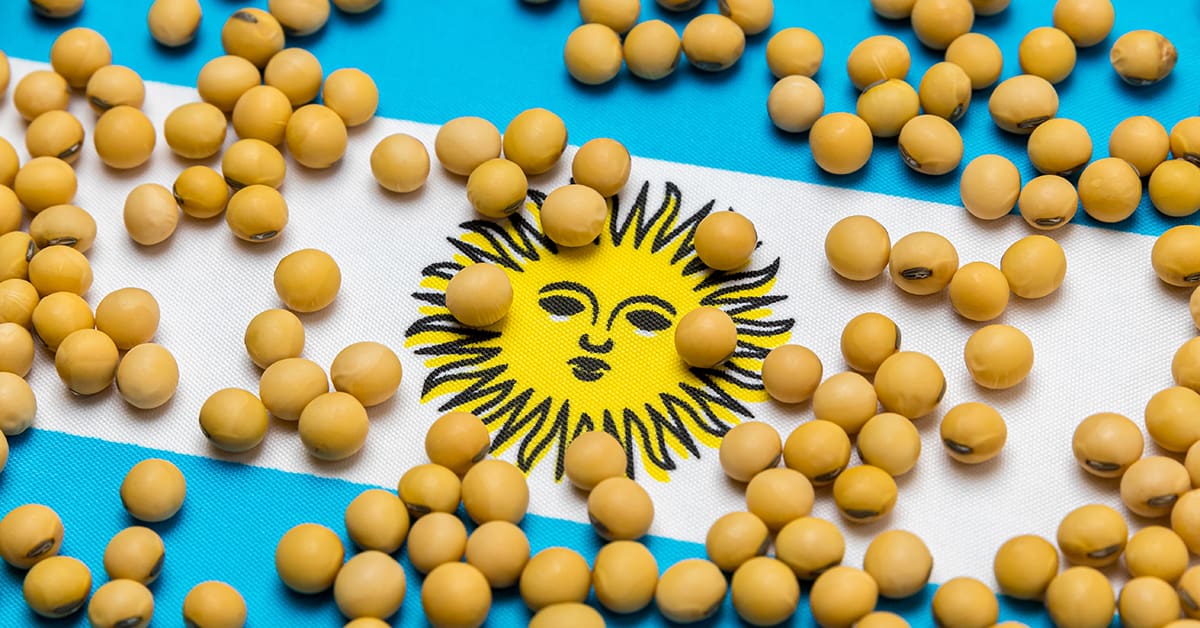A shrewd policy move helped turn Argentina's soybean surplus into hard currency reserves for the government.

Despite rising export profitability due to high commodity prices and a solid 2.6% expected GDP growth for 2022, the Argentinian economy continues to face extraordinary challenges.
The South American country has the world’s second-highest inflation rate (78.5%, as of October 2022) and a sinking peso, down around 35% to the US dollar for the year.
Against the backdrop of extreme currency volatility, Argentine companies find themselves forced to do business almost solely with foreign currency. But with the Argentinian government’s cash reserves running in the negative, the only alternative has been to resort to the dubbed “parallel (black) market,” which has been supplying the bulk of the country’s dollars at an exchange rate that’s more than double the official benchmark.
Amid these extraordinary difficulties, soybean supplies have been piling up in the country’s warehouses as producers struggle to find the means to move them. According to the government’s official numbers, Argentina’s soybeans crop was estimated at a record 44 million tons this year, but nearly half of that remained unsold by September.
Sergio Massa—Argentina’s new “super minister” of Economy, Production, and Agriculture—coined the “soy dollar” in September to counter the trend. The initiative guaranteed a fixed above-market peso price against the dollar for soybean grain producers.
The basis of the idea was to create liquidity for the market.
The initiative lasted only for a month, but it achieved tremendous success for producers and the government. Nearly a third of the country’s soybean crop was moved during the period, boosting Argentina’s foreign currency reserve by $7.6 billion.
“It was an important success for soy producers, for Argentinian reserves, and for global food security,” Massa says. “The goals of strengthening reserves agreed with the International Monetary Fund are now more than fulfilled.”
Despite the initiative’s success, there are no mentions from the Argentinian government to reinstate it anytime soon. “[The soy dollar] worked because it was a limited offering for a specific problem,” says EconViews executive director Miguel Kiguel.



